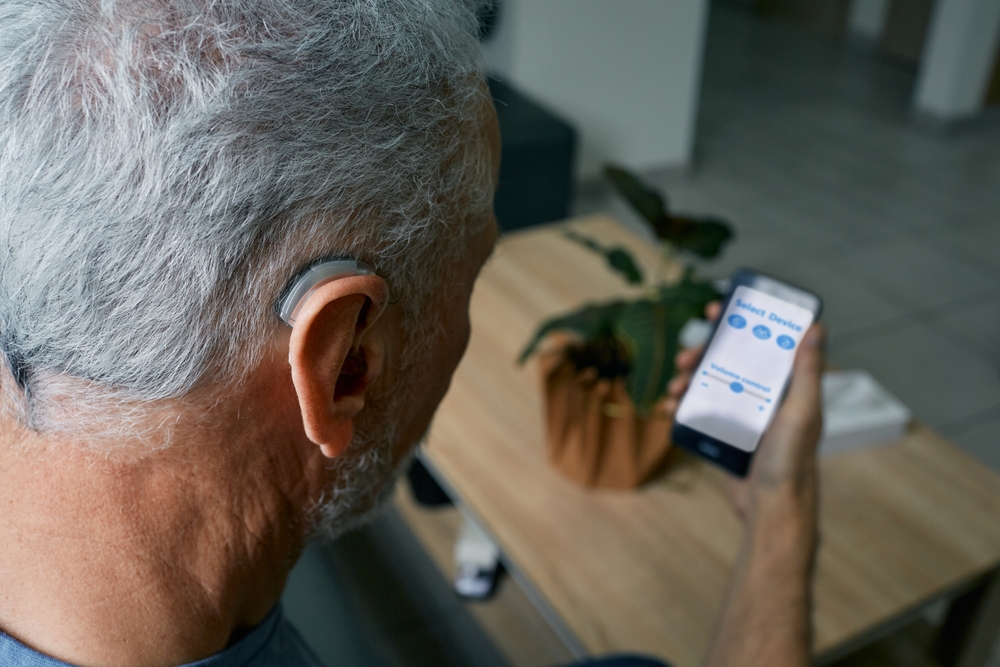Modern hearing aids can do some amazing things. From machine learning to A.I. to health tracking to wireless syncing with smartphones, hearing aids are staying ahead of the game. They’re seamlessly integrating new technologies almost as fast as they can be developed.
For those who need hearing aids for hearing loss, the hearing aid has become more than an assistive device that simply replaces a lost function. Hearing aids are quickly becoming an enhancement to natural hearing and must-have wearables for those with hearing loss.
Now, hearing aids can translate? Let’s take a look at this feature and 3 more of the latest innovations in hearing technology.
1. Solar-Powered Hearing
Solar power: it’s not just powering your home, traffic lights, and some cities. It may be powering your advanced hearables in the near future.
The cost of energy impacts behaviors a lot.
For example, when gas is expensive, people don’t drive as much as they’d like. You may avoid over-using certain appliances in the home because they use so much electricity.
Many hearing aid wearers don’t wear their hearing aids enough to get the full benefit of restored hearing. Why? Because batteries cost so much.
When they’re not using their hearing aids, they’re missing out, getting lonely, and potentially going into cognitive decline–a well-documented side effect of hearing loss.
Solar power may be the answer.
One company is creating hearing aids with alternate charging systems like USB. No more fumbling with button batteries. You can plug it into your computer or a USB outlet adapter to recharge.
Alternately you can dock your hearing aid on a small solar charger and set it in the sun. Batteries fully charge in about 2 hours, and recharge frequency varies. These new batteries last 2-3 years.
2. Hearing Aids that Can Read Minds
It would be very neat (and scary) if your hearing aids could read someone else’s mind. But we’re talking about hearing aids that can read your mind when you’re wearing them.
Most hearing aids today are digital. They can receive sound, process sound, and help adapt it to your specific needs to maximize hearing.
Mind-reading hearing aids will take this technology to a new level.
Researchers are working on technologies that allow hearing aids to read your brain waves. By doing so, they can better understand how well you hear in different situations.
They can then adapt their output to optimize your hearing experience.
3. Hearing Vests
Our bodies adapt in so many ways. People born without arms can learn to dress, work and eat using their feet. People who’ve lost certain brain functions are often able to compensate with other parts of their brain.
What if people with profound hearing loss could use their skin instead of their inner ear to “hear”?
That’s what scientists are working on. It’s a vest connected to your smartphone’s microphone. It receives sound and then converts that sound into vibrations on your skin.
Just like a hearing person’s brain uses vibrations in the inner ear to understand sounds, researchers hope that they can train the brain to interpret the skin vibrations as sound.
While this technology is still in development, they’re making progress as we speak.
4. Hearing Aids that Break Down Barriers
Language barriers can make us feel very different from people who don’t speak the way we do. Experiencing the culture and cuisine of a foreign country is more of a challenge if you don’t speak their language.
Hearing aids may soon eliminate this boundary between us. Translation software is getting very close to being able to translate in real-time.
That means that as someone is speaking, you could almost instantly hear what they said translated to English. A translator’s voice would speak right into your ear. If the person you’re listening to also has this technology, you could have a conversation.
Companies are already putting this technology into earpieces. Incorporating the translation function into hearing aids is the logical next step.
As soon as this is available, anyone who loves to travel or connect with people who speak other languages will want hearing aids.
Hearing aids today do a lot more than just make sound louder. They’re custom-fit to meet your unique needs and adapt to your active lifestyle. They integrate must-have technologies to not only enhance the hearing experience but your life as a whole.
Talk to a hearing specialist about your options and the latest hearing technologies.



